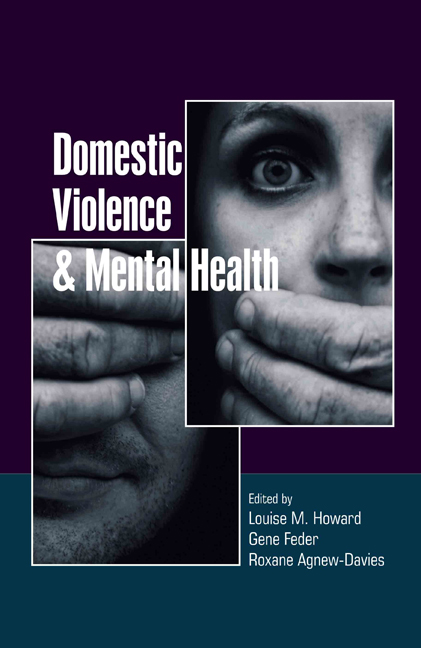Book contents
- Frontmatter
- Contents
- List of tables, boxes and figures
- List of contributors
- 1 Prevalence and physical health impact of domestic violence
- 2 Domestic violence and mental health
- 3 Identifying domestic violence experienced by mental health service users
- 4 Responding to disclosures of domestic violence
- 5 Interventions for mental health service users who experience domestic violence
- 6 Medico-legal issues
- Appendix 1 CAADA Risk Identification Checklist (RIC) and Quick Start Guidance for Domestic Abuse, Stalking and ‘Honour’-Based Violence
- Appendix 2 Domestic violence resources and directory of services
- Index
4 - Responding to disclosures of domestic violence
- Frontmatter
- Contents
- List of tables, boxes and figures
- List of contributors
- 1 Prevalence and physical health impact of domestic violence
- 2 Domestic violence and mental health
- 3 Identifying domestic violence experienced by mental health service users
- 4 Responding to disclosures of domestic violence
- 5 Interventions for mental health service users who experience domestic violence
- 6 Medico-legal issues
- Appendix 1 CAADA Risk Identification Checklist (RIC) and Quick Start Guidance for Domestic Abuse, Stalking and ‘Honour’-Based Violence
- Appendix 2 Domestic violence resources and directory of services
- Index
Summary
Many clinicians either respond inappropriately or feel ill equipped or lacking in training to respond to disclosures about domestic violence from service users. Because the healthcare system may be the victim's first or only point of contact with professionals (Donaldson & Marshall, 2005), the initial response of a mental health professional after any disclosure is crucial to promote the person's safety, access to appropriate support and recovery. As in Chapter 3, most of this chapter is based on good practice guidelines for female victims of domestic violence, as there is a very limited evidence base on the optimal response of mental health professionals and most literature refers to women, reflecting the higher prevalence and severity of violence and abuse experienced by women. This work also draws from feedback from service users on what they found helpful or unhelpful about mental health professionals’ responses to initial disclosures of experiences of abuse (Feder et al, 2006; Rose et al, 2011; Trevillion et al, 2012). As in Chapter 3, the good practice guidance refers to clinicians working with colleagues in the multidisciplinary team. Healthcare professionals should not attempt to manage a disclosure of domestic violence alone; discussion of the complex issues involved is helpful, and multidisciplinary support in the assessment, formulation and management of patients is essential.
What service users want to hear
Women who have experienced domestic violence have been asked to identify what would be a positive initial response to disclosure (Rodriguez et al, 1996). They came up with several issues: creating a supportive environment, providing continued support, developing trust and reassurance of confidentiality. From other studies, it emerged that what is also important is information-giving, making referrals to community resources or providing resources on site; talking about the violence in a compassionate and sensitive manner; promoting safety; documenting the abuse; and a nonjudgemental response (McNutt et al, 1999; Rose et al, 2011). Women have emphasised the need for health professionals to listen to their concerns, respond in a non-judgemental and non-directive way and work at a pace at which they felt comfortable, without pressing for a quick resolution of the problem (Feder et al, 2006). Body language and facial expressions were subtle but important ways of showing concern and developing trust (Rodriguez et al, 1996).
- Type
- Chapter
- Information
- Domestic Violence and Mental Health , pp. 49 - 63Publisher: Royal College of PsychiatristsFirst published in: 2017

